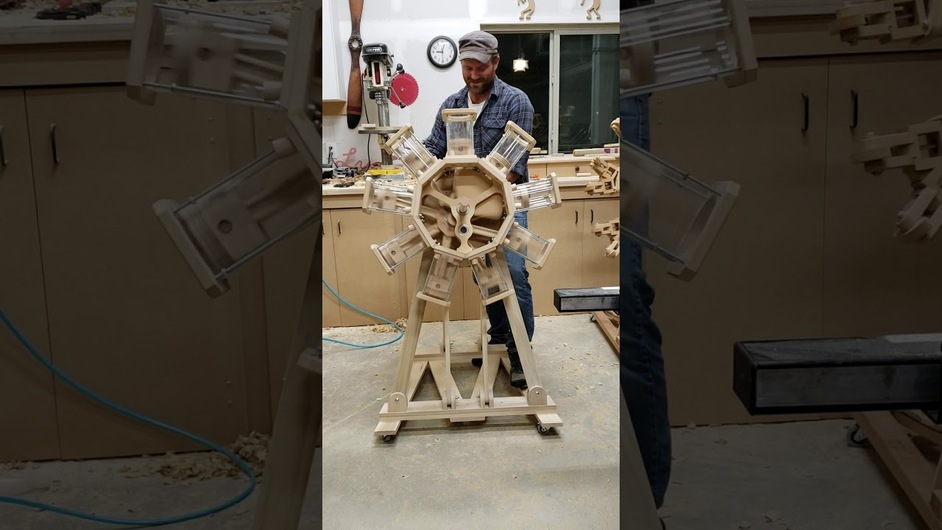This is pretty cool.
I’ve always been amazed by radials; this is a lovely model.
I once saw a training cutaway of a corncob that mesmerized me. I mean all the things we came up with to make SHP before the invention of the turbine engine.
Fully expected a blowout before he backed off…
Yeah me too, that was a pretty impressive RPM.
If you have ever been in a car that “threw a rod” you can now understand why that is such a catastrophically bad thing. Also why it makes such a big bang. 
RIP, Saturn.
Not my favorite Thanksgiving trip.
It’s all about “balance”. The reciprocating parts balance each other out, and there’s a big counterweight for the crankshaft. If he balanced it correctly, short of throwing a piston out the top of a cylinder, it ought to run as fast as his motor allows. Notice that it doesn’t shake or wobble or “walk” when he speeds it up. It’s really well balanced.
Interesting fact - the original radial aircraft engines were designed so the crankshaft was bolted to the firewall of the airplane and the entire engine spun around the crank. This helped with air cooling, and the rotating inertia helped keep the motors running since there was no throttle and pilots had to turn the spark on/off by hand to reduce engine power). One of the reasons the Fokker Triplane was such a good plane in combat was because of its spinning engine (which was always trying to spin the airplane in the opposite direction). Except it only helped when turning the right way…
These early precursors of the radial are normally referred to as rotory engines and are quite bizarre in that they didn’t have a carb that could be controlled like today’s carburetors so that used selective ignition to control the speed!
Wow, that was pretty cool. I thought for sure it was going to explode before the end. That was actually kind of scary…
I’ve been working for almost two years on a functional rotary engine design to use as a clock face.
The biggest challenge has been how to drive it while keeping it self-contained, i.e. no wires. The design itself isn’t too bad as there is a lot of documentation on these old classics. A 5" single-cylinder proof-of-concept worked laying horizontally driven by a AA-powered clock mechanism, but I need to use a stepper for the final version (planning around 24".) Hence higher power requirements. I do have a plan for this.
Cheat, use external power but install a clock outlet.
No visible wires.
OH boy, those rpm were a bit terrifying but I think I would do the same thing in that scenario lol
This topic was automatically closed 32 days after the last reply. New replies are no longer allowed.
